The numbers don’t lie: the third wave is less deadly in Quebec and the number of new cases of COVID-19 has been declining for a few weeks now. From vaccination to established measures, including adherence to them, several factors can explain this less dismal record.
More cases, fewer deaths
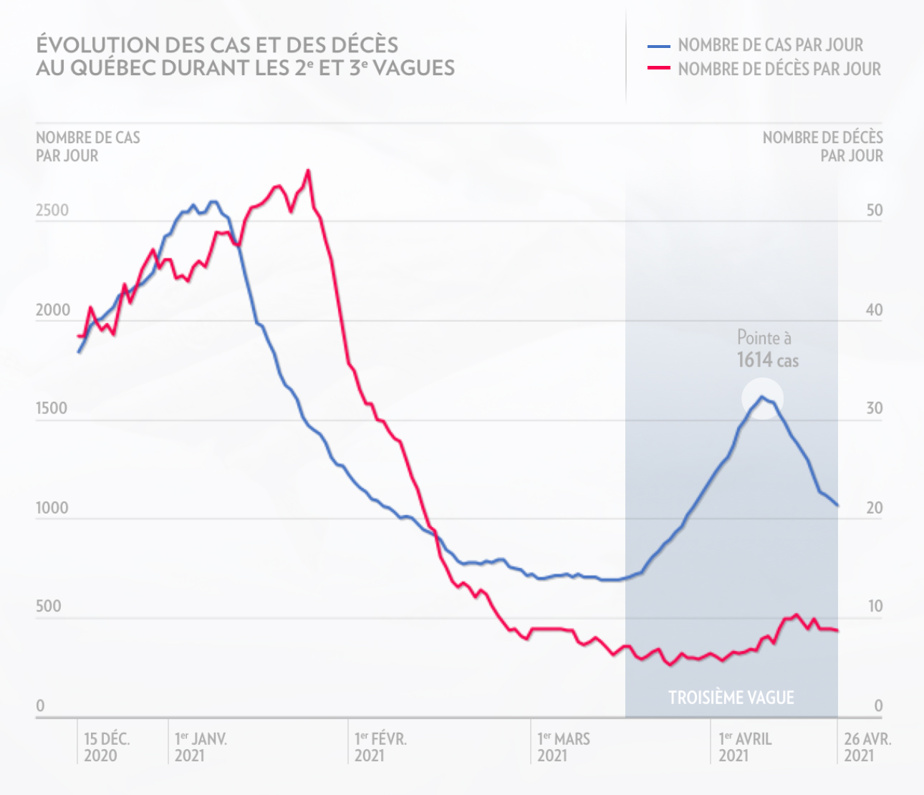
Infographic Press
Source: INSPQ
When we focus on cases, we see that the third wave of COVID-19 contamination began at the end of March in Quebec. Since the start of April, the 7-day moving average has risen rapidly over 1,000 cases per day for the entire county, and peaked at 1,614 cases on April 13. Since then, there has been a slight – but somewhat steady – decrease in cases. However, the variation in the number of daily deaths is much less. At the height of this third wave, that average increased to 10 deaths per day, just above the end of the second wave. In fact, since the end of the second wave, this curve is slightly different, with the average oscillating between 6 and 10 deaths per day.
Decreased mortality among the elderly
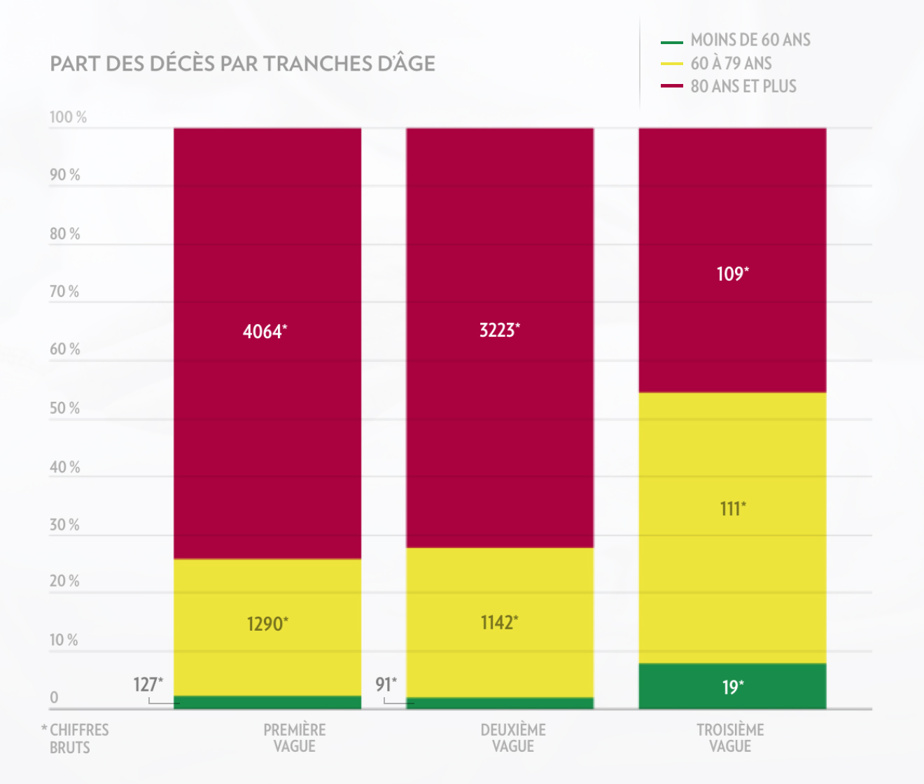
Infographic Press
Source: INSPQ
To fully understand what characterizes the third wave, we must look at deaths among those 60 years of age or older, a population that has recorded 98% of the deaths since the start of the epidemic. However, fewer of them have died since March. At the height of the second wave, there were an average of 40 deaths per day among those 80 years and over. There were dozens of people between the ages of 60 and 79. During the third wave, the increase in the number of deaths among those aged 60 to 79 was very slight, to five per day. Among those aged 80 or over, the increase was smaller.
The effect of vaccines
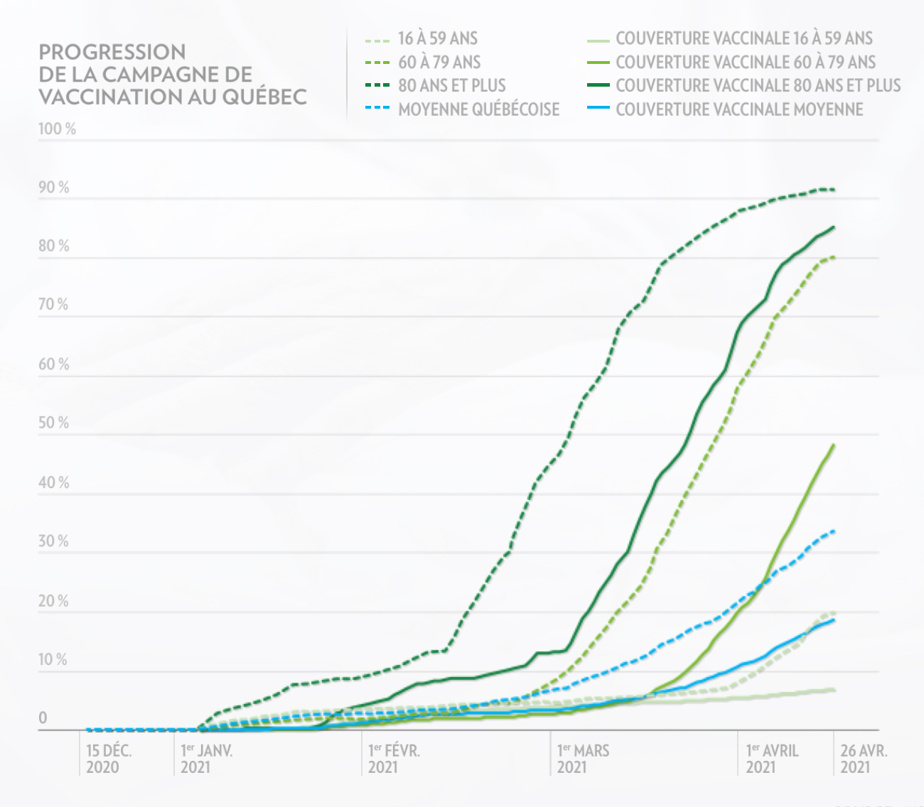
Infographic Press
Source: INSPQ
In Quebec, the vaccination campaign began in mid-December, but actually took off in February, first among the elderly. It takes 2-3 weeks between taking a dose and the time it reaches its full effect. In early April, when the third wave gained momentum, effective vaccination coverage for those aged 80 and over surpassed 50%. She is now approaching that threshold between 60 to 79 years old. Dr.s Alex Carignan, microbiologist and infectious disease specialist at CIUSSS de l’Estrie.
Few of the elderly
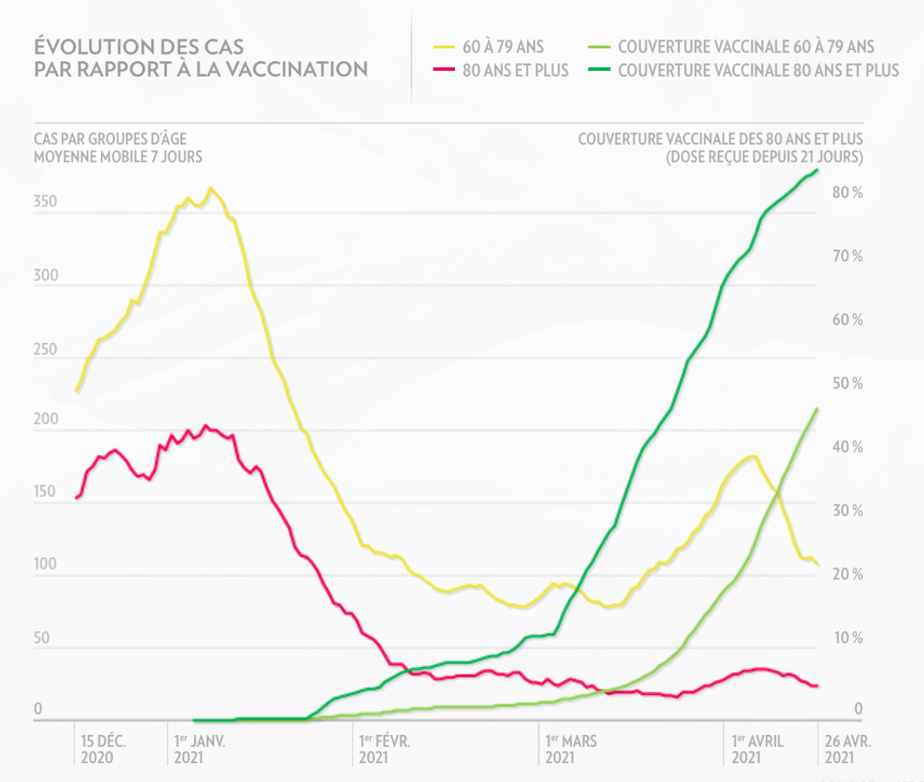
Infographic Press
Source: INSPQ
Immune coverage had a pronounced effect among those aged 60 and over who were severely infected during the second wave. Then there were 350 new cases per day among those between the ages of 60, 79 and 200 among those aged 80 and over. But when the third wave struck, cases were significantly lower among those aged 80 and over, the segment of the population that had been vaccinated the most. At the height of this wave, there were 35 new cases every day. In early April, those aged 60 to 79 were significantly less protected: barely 5% had received a dose of the vaccine for 21 days or longer. So people between the ages of 60 and 79 experienced the third wave, but with only 175 new daily cases at the top. However, since mid-April, when vaccination coverage for this age group reached 33%, cases have decreased sharply.
A younger wave
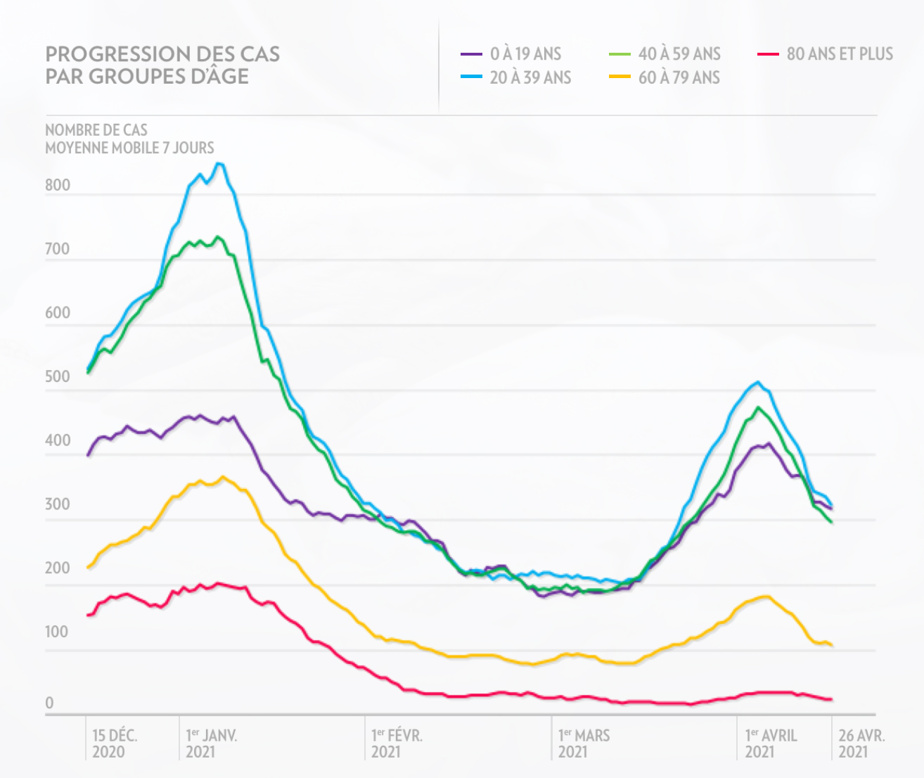
Infographic Press
Source: INSPQ
Especially the younger ones who are still being affected by the relocation. At the end of April, 60% of new cases were in people under the age of 40. These young people “get sick for longer and wait longer before going to the hospital,” raised Health Minister Christian Dube, stressing that no one is really safe from complications related to the virus. According to Dr.s Carignan, the advancement of vaccination, along with declining cases and hospitalizations among the elderly, indicates that Quebec “is in the home range”. “I hope we’re looking at this in the rearview mirror from now on,” he said.
The rules are generally well respected
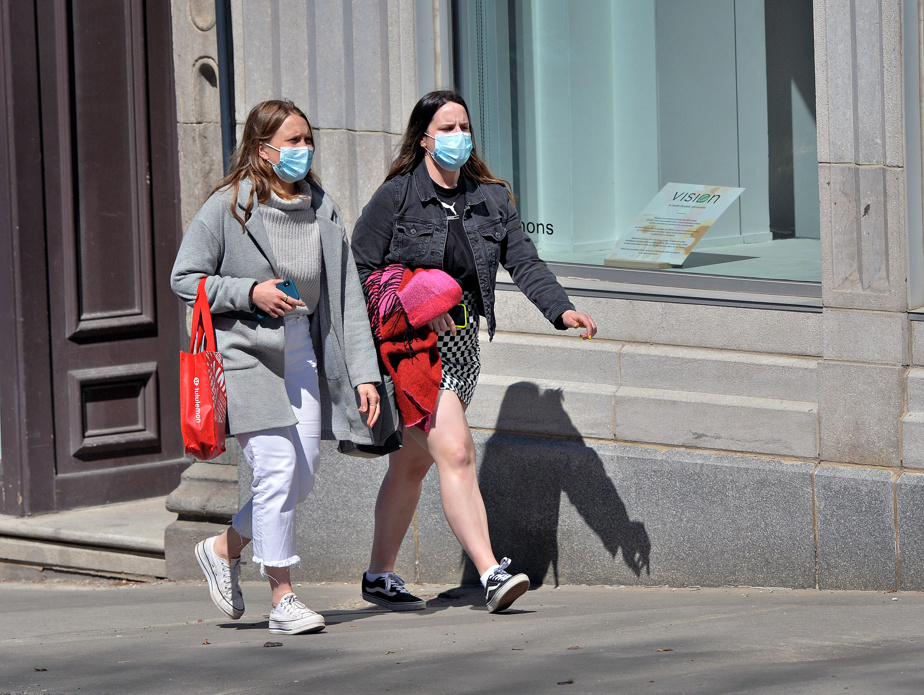
Photo by Patrice LaRouche, archived from The Sun
A recent study by the National Institute of Public Health in Quebec concluded that wearing a mask enjoys significant support from Quebecers.
According to many observers, it is the discipline of Quebecers also and above all that “drives the day”. “If we compare ourselves more directly to Ontario, for example, it has nothing to do with it. Instead, Doug Ford gambled on maintaining a semblance of normality as stores and restaurants opened, while there was almost no activity, especially with curfews. “Mary Pascal Boumé, a public policy specialist in the School of Public Health at the University of Montreal, recalls. In addition, the expert insists that the protests against health rules in Quebec are “very weak compared to what we see elsewhere in the world.” A recent study by the National Public Institute of Quebec concluded that wearing a mask, in particular, has a noticeable support of 94%, as well as washing hands several times a day (73%). And the prohibition of private gatherings with people who do not belong to the same family (72%). On the other hand, remote work is becoming less and more a reality for the population. 46% of respondents said that they no longer do this.

“Music guru. Incurable web practitioner. Thinker. Lifelong zombie junkie. Tv buff. Typical organizer. Evil beer scholar.”





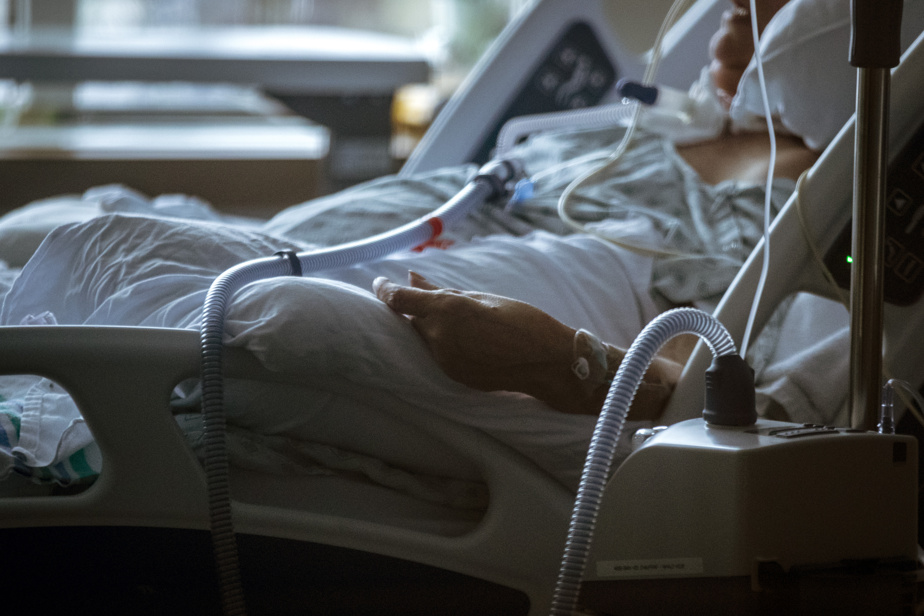



More Stories
After the discovery of norovirus, these berries should not be eaten.
Mechanics Strike | WestJet Cancels Nearly 700 Flights, Affects Nearly 100,000 Passengers
Three 'basic' Airbnb listings: Owner shares how he easily skirted the rules